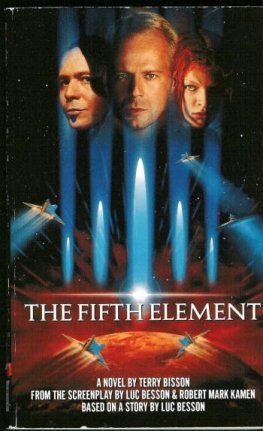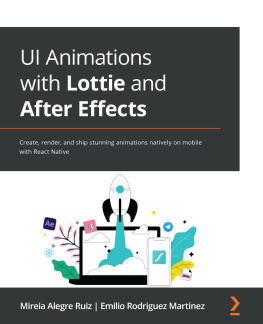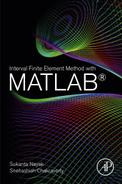About the Author
Ty Audronis has a rather unique background in the media world. He's often asked how he got into the field. Well, it's a bit of a story, but he'll be as brief as possible, narrating it in his own words.
I had the great benefit of having a father in the semiconductor industry and an overachieving (to say the least) family. So, my family was the first of all my friends to have a computer in 1980 (well, maybe 1981, I'm not sure). When other kids were fooling around, I was out hooking up neighbors' computers and showing them how to use them. I was only seven (or eight).
In the mid 80s, my father hired me to do some quality assurance (QA), and illustrations for his software. This was my first paid graphics gig (laughable by today's standards). I used "Dr. Halo" on a monochrome computer, but still, that was a huge advantage over other kids.
At the same time, I was learning music and programming, and doing anything where I could mix art and technology. Remember that Star Trek: The Next Generation episode where that kid got hold of a cool laser thing that meant he could sculpt anything he liked? That was me, tech and art all the way.
After some difficulties in the music world after high school, I joined the Navy. I forgot all about art for the time but stayed with technology. I was stationed in Japan and served aboard the USS Independence (CV-62) from 1992-1994 in a helicopter squadron. No, I wasn't a pilot or anything glamorous (just a lowly E-3). I got hurt in a typhoon off the coast of Guam and was retired.
The Navy began to pay for my college fees, and I decided to be a lawyer. I won many debates, and got a national bronze medal for informative speaking. However, my mentor for the debates told me not to be a lawyer. She said that I debate effectively but I couldn't stand people lying. She said I'd have a heart attack before 35, so I went into marketing.
Why is all of this relevant? Because inadvertently, I found art again. I figured, "I may as well learn about animation and production, because I'll need to tell them what I want in their language." So, I took a computer animation class. This is really where my career took shape.
The class was taught by a man that was to become my mentor, Rick Vertolli. He and his assistant (Randy Wall) shaped my animation skills, and resparked my desire to create. After that class in Wavefront (yes, way back then, our workstations were Silicon Graphics "Indy" machines), I found myself interning for Rick over the summer and rewriting the text book to be used in Lightwave and later, Maya. This was the first taste I had of writing how-tos. Over the years, I became Rick's assistant, lectured several times, and was the full-time lab assistant. I changed my major to a special major in Computer Generated Special Effects. I also won my first award in animation during this time (a "Rosebud").
After working with Rick, Randy, and Chris Ficken as an intern and lab assistant for four years, I was recruited by frog Design as a design technologist. My knowledge of programming and graphics was unique and was in high demand during the .coms. Those were the days. We had our desks in a circle with a model train and slot car track with every video game system on the market, coffee time at 4 PM, soccer in South Park (in San Francisco) at 5 PM, and unreal tournaments across the intranet (against other frog offices world-wide) at 5:30 PM nearly every day. Yes, we worked hard but we played hard too.
Sorry, I digress. At frog, I got to work with some of the world's best companies, had access to design, animation, web development, and just about every toy a geek artist could desire. But then, .com turned into .bomb and layoffs came. I still remember lunches on Bryant St. in San Francisco and going up and down the street to auctions in Web MD and Pets.com (to name a few). Cars were clogging San Jose International airport (techs on H-1 visas just abandoning their Mercedes and BMWs and flying back home to England, France, India, and so on). An auction car would be a steal back then; times were scary. My first child was born; I was terrified.
So, I returned to entertainment. I went to a local TV station in Chico, CA and worked on producing ads for a few months. I moved on to an ad agency for a few years (worst job ever). Then, I met up with another mentor of mine, Robert (Bob) Condos.
Bob gave me my first real production gig. I came on a show called "So, You Want to Be a Star" as the producer, with Bob as the EP. Everything up to this point in my career was a concept. I used every bit of my art, tech, and personal knowledge, and we pulled off the impossible. It was a 14-week show on a shoestring budget. In the end, I was the producer, director, and editor. We had a lot of help from some great people but I learned a lot during that show. It's still my favorite experience in entertainment; not the most prestigious, not the most recognizable, but the best. This is when my second child was born.
At the same time, I was in a partnership that started an Internet radio station that catered to MMO gamers in Matrix Online. Machine radio was fun, amazing, and a great experience. I learned a lot about online community building, appealing to markets, and what appeals to people in general. I couldn't devote enough time to machine radio (due to the TV show I was producing), so I let one of the partners take overa decision I'll regret until the day I depart this sweet earth. The station then died.
After a few nondescript tech jobs, I was recruited to California Academy of Sciences in San Francisco to help with the web redesign during their rebuild in 2007. Near the end of the web relaunch, the Planetarium Director heard that I had some TV experience. So, I had lunch with him and gave him a few nuggets of advice on setting up the Science Visualization studio (basically, a full production and effects department for the purpose of making visual representations of scientific principles, among which are planetarium shows). We built the (at that time) world's largest all-digital dome, a 3D theater, and a full animation and editing department. It was amazing. We won many international awards and played with some of the entertainment industry's hottest technology.










